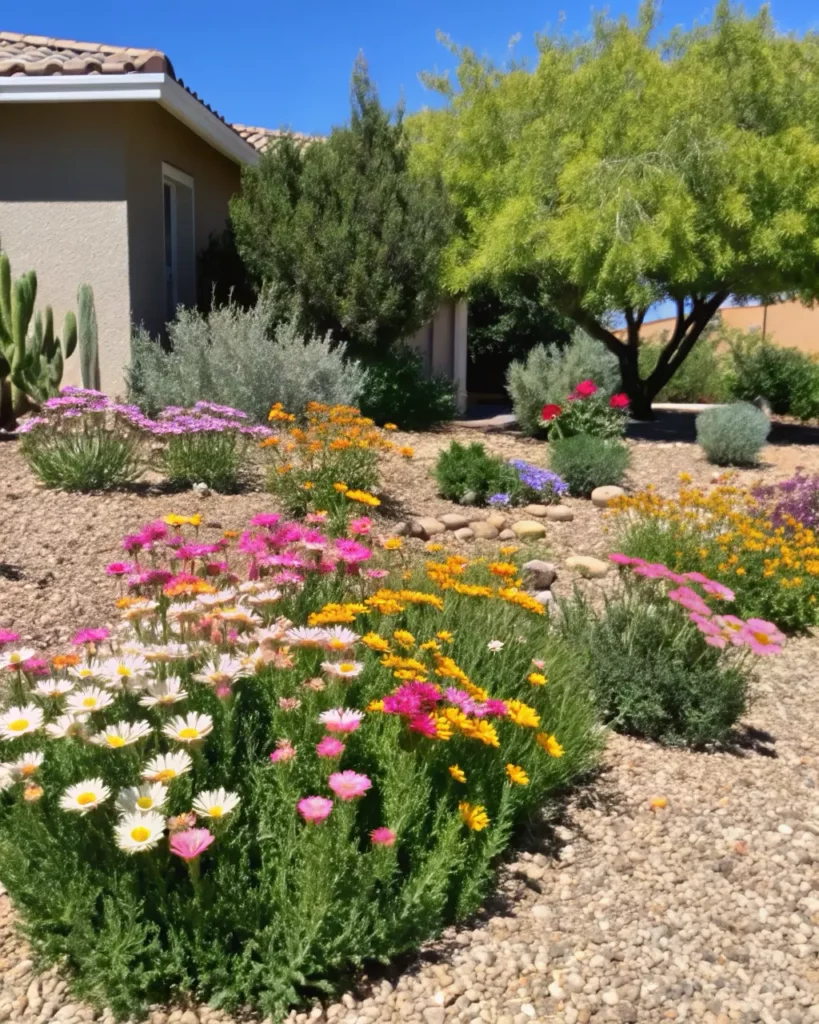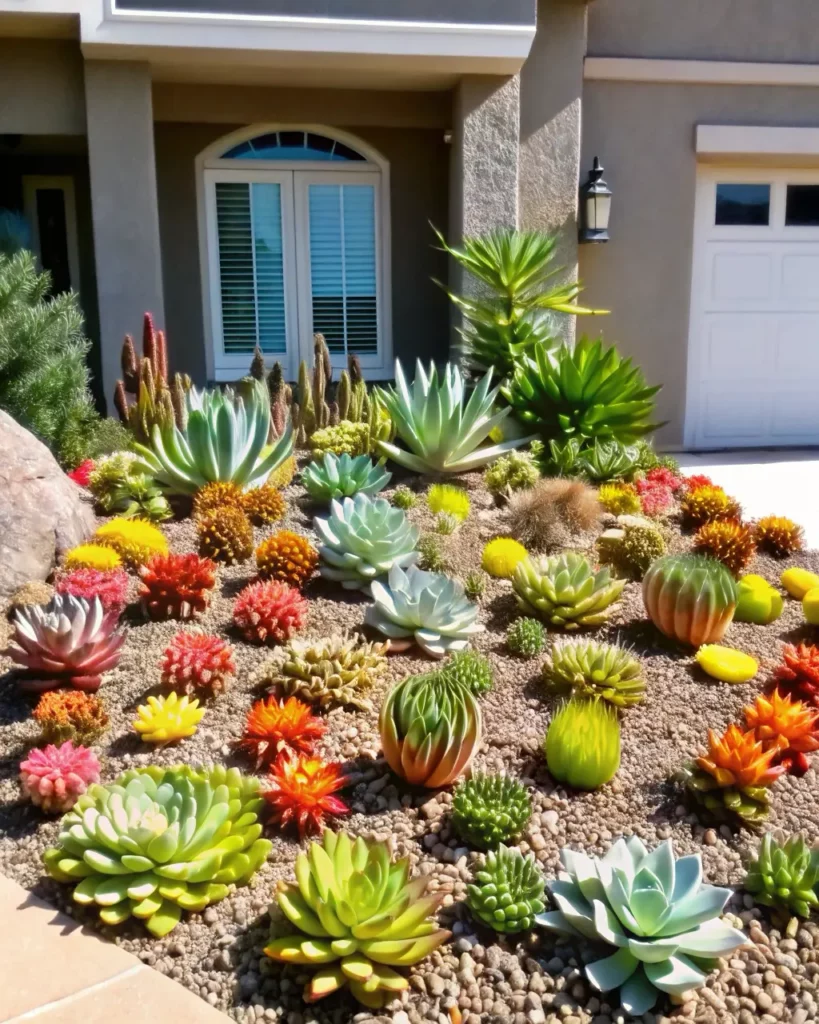Water-wise landscaping has evolved from a necessity in arid regions to a smart choice for environmentally conscious gardeners everywhere. Drought-resistant plants offer the perfect solution for creating beautiful, low-maintenance landscapes that conserve precious water resources while providing stunning visual appeal throughout the year. These resilient plants have adapted to survive with minimal water, making them ideal for xeriscape garden ideas that combine sustainability with aesthetic beauty.
Table of Contents
Water-Wise Landscaping for Modern Gardens
The growing popularity of drought-tolerant landscaping reflects both environmental awareness and practical gardening wisdom. These plants typically require less maintenance, are more resistant to pests and diseases, and provide consistent performance even during challenging weather conditions. By incorporating water-efficient plants into your landscape design, you create gardens that remain beautiful with minimal intervention.

Benefits of Water-Efficient Landscaping
Water-efficient landscaping offers numerous advantages beyond obvious water conservation. These gardens typically require less fertilizer, as many drought-resistant plants are adapted to nutrient-poor soils and can actually be harmed by excessive feeding. This reduced input requirement translates to lower maintenance costs and less environmental impact from fertilizer runoff.
Drought-tolerant plants often exhibit superior resilience to extreme weather conditions. They typically handle heat waves, cold snaps, and irregular rainfall patterns better than traditional landscape plants. This reliability makes them excellent choices for gardeners seeking consistent performance with minimal effort.
The diverse textures, colors, and forms available among drought-resistant plants allow for creative design opportunities. From silvery-leaved Mediterranean herbs to bold succulent rosettes, these plants offer unique aesthetic possibilities that can create distinctive, memorable landscapes.
Seasonal Appeal of Drought-Tolerant Plants
Understanding the seasonal characteristics of drought-resistant plants helps create gardens with year-round interest. Many of these plants produce their most spectacular displays during challenging conditions when other plants struggle. Spring often brings surprising flower displays from desert natives, while summer showcases the architectural forms and interesting foliage that define many drought-tolerant species.
Fall frequently provides unexpected color changes in drought-resistant plants, with many species developing attractive seed heads or changing foliage colors. Winter reveals the strong structural elements that make these plants valuable for four-season interest, as their forms remain attractive even when dormant.
The key to successful drought-tolerant landscaping lies in selecting plants that provide complementary seasonal interest. By combining spring bloomers with summer foliage plants and fall-interest species, you create dynamic gardens that evolve throughout the year while maintaining their water-wise characteristics.

Top Drought-Resistant Plants for Four-Season Beauty
Fragrant Sumac (Rhus aromatica) offers exceptional four-season value in drought-tolerant landscapes. This native shrub produces small yellow flowers in early spring before leaves emerge, followed by attractive three-leaflet foliage that turns brilliant orange-red in fall. The plant’s low, spreading habit makes it excellent for naturalizing on slopes or creating informal hedges. Female plants produce red berries that provide winter interest and wildlife food. Fragrant sumac tolerates poor soils and extreme drought once established.
Bear’s Breeches (Acanthus mollis) creates dramatic architectural presence in water-wise gardens. This Mediterranean perennial produces large, deeply lobed leaves that form impressive clumps, topped by spectacular spikes of white and purple flowers in summer. The foliage provides bold texture throughout the growing season, while the flower spikes can reach 3-4 feet tall. Bear’s breeches prefer well-drained soil and can tolerate considerable drought once established, making them ideal for xeriscape garden designs.
Periwinkle (Vinca minor) serves as an excellent drought-tolerant groundcover for challenging areas. This evergreen perennial spreads slowly to form dense mats of glossy, dark green foliage topped by blue, purple, or white flowers in spring. The foliage remains attractive year-round, providing consistent color and texture. Periwinkle tolerates deep shade as well as drought, making it versatile for various landscape situations.
Mondo Grass (Ophiopogon japonicus) offers grass-like texture without the water requirements of traditional lawn grasses. This evergreen perennial forms dense clumps of narrow, dark green leaves that remain attractive throughout the year. Small white or pale purple flowers appear in summer, followed by blue-black berries. Mondo grass works well as edging, groundcover, or accent planting in water-wise gardens.
Russian Sage (Perovskia atriplicifolia) provides outstanding summer and fall interest in drought-tolerant landscapes. This perennial shrub produces silvery-gray foliage and airy spikes of lavender-blue flowers from midsummer through fall. The plant’s fine texture and pale colors create beautiful contrast against darker-leaved companions. Russian sage requires minimal water once established and provides excellent cut flower material.

How to Group and Plant for Aesthetics
Successful drought-tolerant landscaping requires understanding how to combine plants with similar water needs while creating visually appealing compositions. Grouping plants by water requirements prevents overwatering drought-sensitive species while ensuring adequate moisture for those that need it.
Creating contrast through plant textures, colors, and forms helps drought-tolerant gardens avoid monotony. Combine fine-textured grasses with bold succulent forms, or pair silvery-leaved plants with deeper green companions. This contrast creates visual interest while maintaining the unified theme of water-wise gardening.
Consider seasonal succession when planning plant combinations. Position spring bloomers near summer foliage plants, and include fall-interest species to extend the season. This approach ensures your drought-tolerant landscape provides continuous appeal throughout the growing season.
Soil Tips and Minimal Irrigation Strategies
Soil preparation plays a crucial role in drought-tolerant landscaping success. Most drought-resistant plants prefer well-draining soil, as they’re more likely to suffer from root rot in waterlogged conditions than from drought stress. Improving drainage through soil amendments or raised beds often proves more important than improving fertility.
Adding coarse sand, perlite, or small gravel to heavy clay soils improves drainage for drought-tolerant plants. Avoid adding organic matter excessively, as many drought-resistant plants prefer leaner soils that don’t retain excessive moisture.
Mulching strategies for drought-tolerant plants differ from traditional approaches. Gravel mulches, decomposed granite, or other inorganic materials often work better than organic mulches, which can retain too much moisture and encourage root rot in drought-adapted plants.
Irrigation Design for Water-Wise Gardens
When irrigation is necessary, drip systems or soaker hoses provide efficient water delivery directly to plant roots with minimal waste. These systems allow precise control over water application and can be easily adjusted for different plant zones within the same garden.
Establishing watering zones based on plant water needs maximizes efficiency in drought-tolerant landscapes. Group high-water plants together in areas where occasional supplemental irrigation is acceptable, while placing truly drought-resistant plants in areas that receive no supplemental water after establishment.
Timing irrigation during early morning hours reduces water loss to evaporation and allows plants to absorb moisture before daily heat stress. Deep, infrequent watering encourages strong root development and improves overall drought tolerance.
Maintenance Calendar for Drought-Tolerant Gardens
Spring maintenance focuses on removing any winter damage, dividing overcrowded perennials, and refreshing mulch layers. This is also the ideal time for planting new drought-tolerant additions, as spring moisture supports establishment before summer heat arrives.
Summer care emphasizes monitoring newly planted specimens and providing supplemental water only when necessary. Established drought-tolerant plants typically require no summer watering, but first-year plantings may need occasional deep watering during extreme heat.
Fall maintenance includes cutting back spent perennial growth and collecting seeds from ornamental plants. Many drought-tolerant plants produce attractive seed heads that can be left for winter interest or harvested for propagation.
Winter care is minimal for most drought-tolerant plants, but protection from excessive moisture may be necessary in areas with wet winters. Covering plants with clear plastic or moving containers to protected areas helps prevent winter rot issues.

Conclusion: Sustainable Beauty Through Water-Wise Design
Drought-tolerant landscaping represents the future of sustainable gardening, combining environmental responsibility with outstanding aesthetic results. These resilient plants offer unique beauty while requiring minimal resources, making them ideal for modern gardens facing increasing water restrictions and climate uncertainty.
By embracing drought-resistant plants and water-wise design principles, gardeners can create landscapes that remain beautiful and functional regardless of weather conditions. The key lies in understanding these plants’ natural characteristics and working with their adaptations rather than against them.

